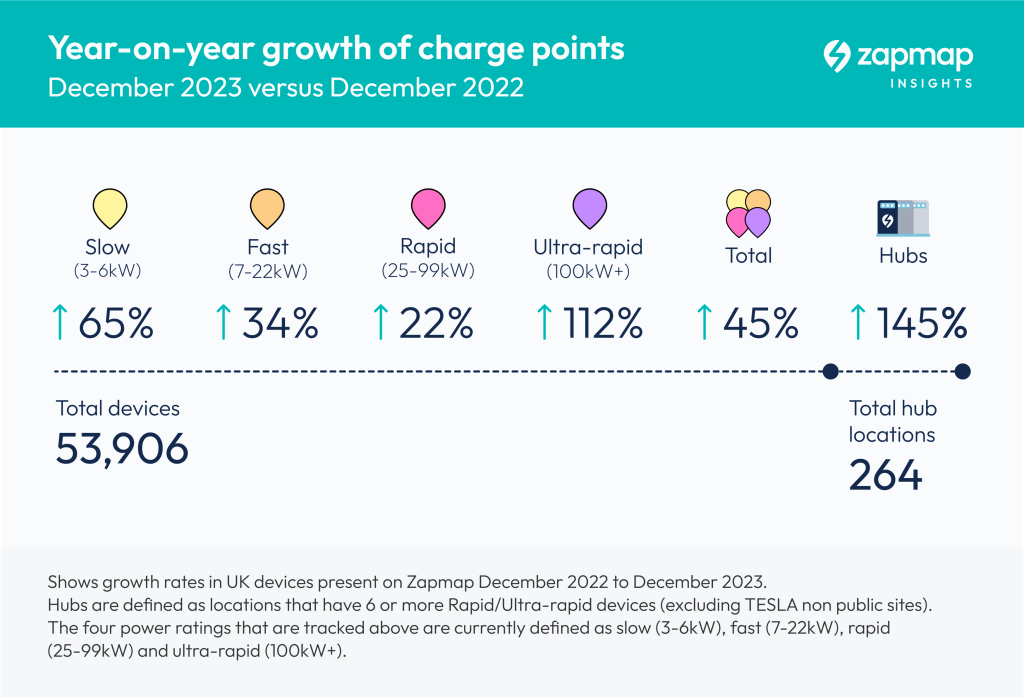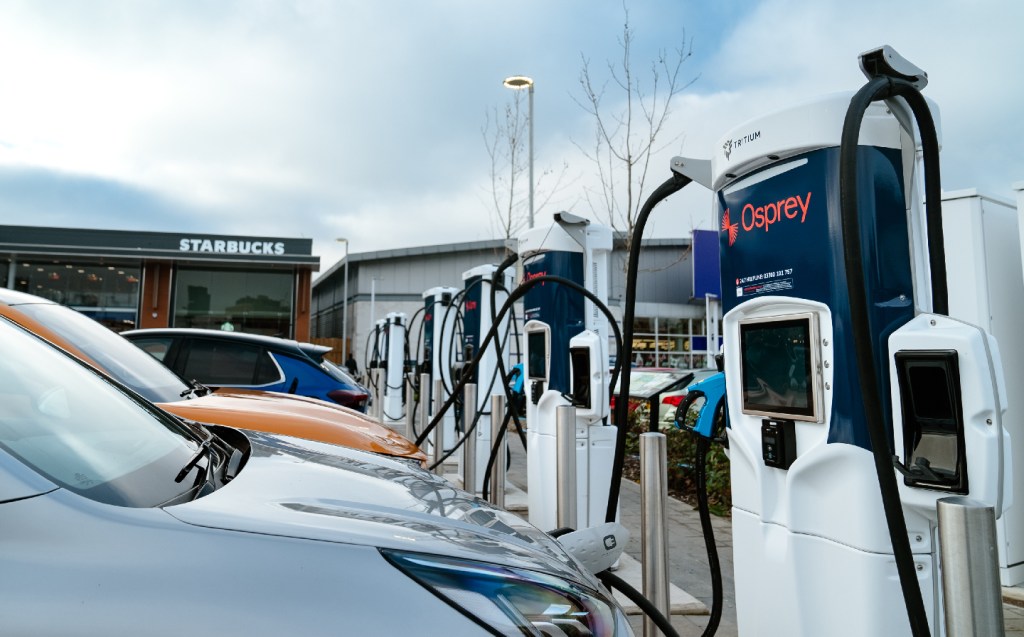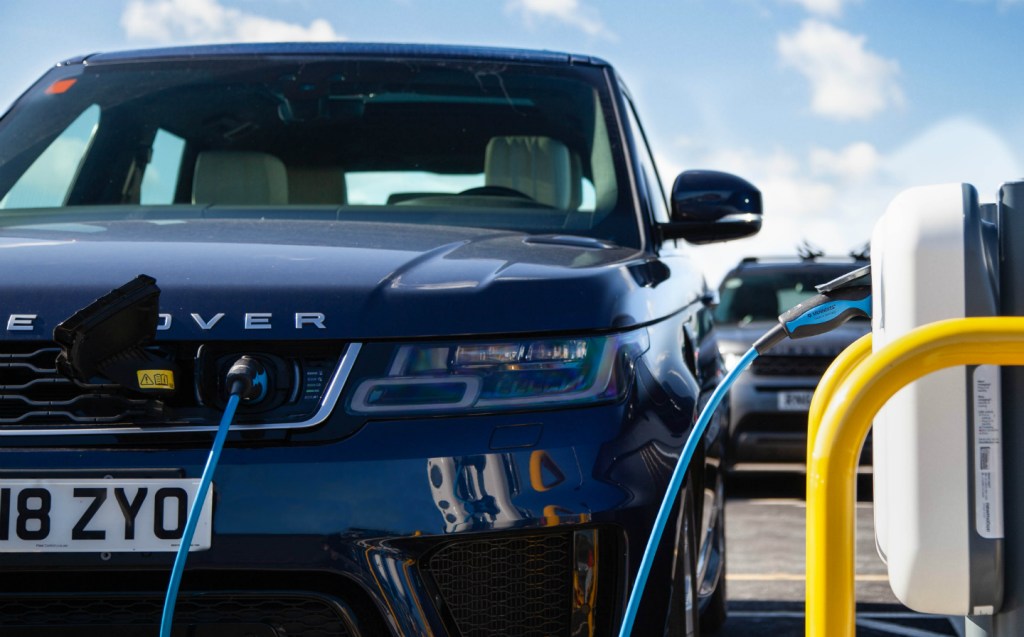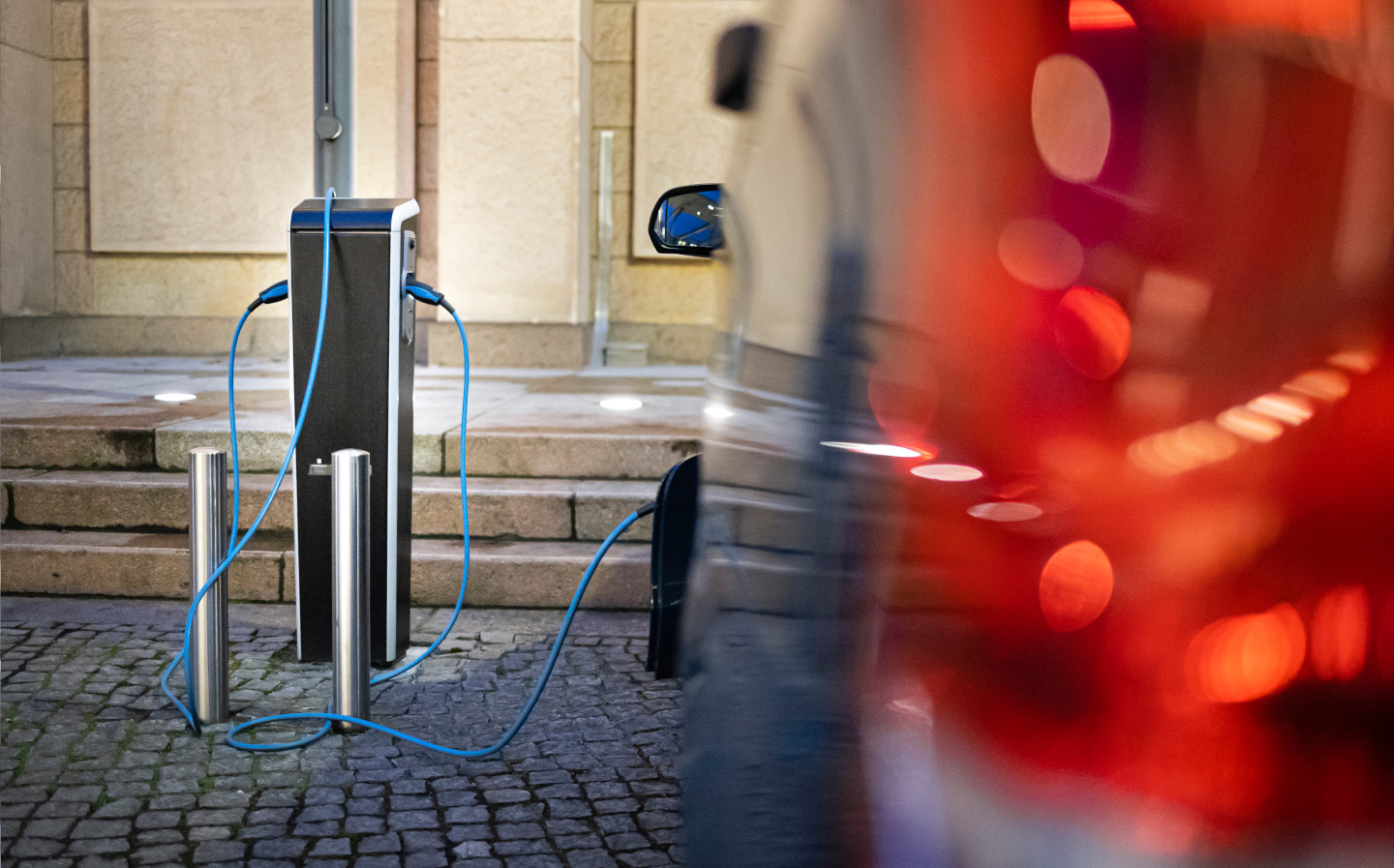Number of EV charging point installations up by 45 per cent in 2023
A lot more needed
Last year saw record growth in the installation of public electric vehicle (EV) charging points in the UK, according to data from mapping firm Zapmap.
The company, whose app provides drivers with locations of charging points across the UK and parts of Europe, revealed the number of chargers installed in the UK rose by 45 per cent in 2023. The same figure was 31 per cent from 2021 to 2022.
The growth means the UK surpassed 50,000 public charging points in October, having passed the 40,000 mark in February 2023.

The figures come after the Society of Motor Manufacturers and Traders (SMMT) announced record electric vehicle sales in 2023, with almost 315,000 battery-electric vehicles (Bevs) registered in the UK during the past 12 months.
Big rise in rapid chargers
At the same time, the number of high-powered charging points — those that can recharge EV batteries more quickly — rose by more than 50 per cent in 2023, finishing the year with more than 10,500 devices across the UK.
Much of that growth came from “ultra-rapid” charging points that can charge EVs at 100kW or more. Such devices accounted for just 20 per cent of the country’s high-powered chargers at the end of 2020, but by the end of 2023, that proportion rose to 46 per cent.

Zapmap’s figures also revealed year-on-year growth in the number of UK charging hubs, which are defined as locations with more than six rapid- or ultra-rapid devices. At the end of 2022, there were 108 such locations in the UK, but that figure stood at 264 by the end of 2023.
“Overall 2023 was a very good year for EV charging with the rate of installation showing record growth, particularly for the higher powered chargers to support EV drivers on longer journeys,” said Zapmap COO Melanie Shufflebotham.
“Zapmap’s focus continues to be on providing EV drivers with the information they need to find reliable, available charging when they are out and about. While less than three per cent of EV drivers would go back to petrol or diesel, we know that EV drivers want more chargers and a better charger experience.
“As we move into 2024 we look forward to continued progress in both these areas as more and more drivers make the positive move to driving electric.”
Motorway services not all serviced
However, despite this progress, the news comes after the government failed to reach its goal of providing six rapid- or ultra-rapid chargers at every motorway service area in England by the end of 2023.
Using Zapmap data, the RAC found just under 40 per cent of UK motorway service areas had met the target by the end of the year.

Admittedly, that figure had risen noticeably from the end of April 2023, when just 23 per cent of motorway services offered six or more charging points. But four locations, including Leicester Forest services on the M1 and Tebay South on the M6, had no charging points at all at the end of 2023.
The figures are particularly disappointing given the Department for Transport’s insistence in 2022 that “over 70 per cent” of motorway services had a plan to deliver six or more charging points by the end of 2023. However, the government did not announce £70 million in grants for such charging points until December 2023.
“It’s clear from our research that the government has fallen well short of its target of having six high-powered chargers at every motorway service area in England,” said RAC spokesperson Simon Williams.
“While that’s the case, some very good progress has been made since the end of April when we last carried out our survey, with four-in-10 services (39 per cent) now having met or exceeded the target number of chargers, compared to just under a quarter (23 per cent) eight months ago.
“We continue to believe that the wide availability of ultra-rapid charging is crucial in giving both current and future EV drivers confidence to know they can easily make journeys beyond the range of their vehicles in a time-efficient way.”
Related articles
- If you were interested in the roll out of EV chargers, you may want to read how the the electric vehicle to charger figures are being labelled as “completely misleading”
- Renault to launch 400kW ultra-rapid charging hubs and new EVs through Mobilize sub-brand
- EV tips: 10 things to know before you buy an electric vehicle
Latest articles
- Aston Martin Valkyrie AMR-LMH hypercar hits track ahead of 2025 Le Mans challenge
- Porsche has begun testing the electric Cayenne
- Cupra Leon 272 eHybrid 2024 review: Bigger battery, better tech … but is it a Cupra?
- Porsche 911 GTS 2024 review: Hybrid heresy or more Stuttgart genius?
- Extended test: 2023 Vauxhall Astra Sports Tourer GS PHEV
- Ford Capri revival has faced a lot of flak… but are buyers put off? Here’s what visitors to the Festival of Speed had to say
- F1 2024 calendar and race reports: What time the next grand prix starts and what happened in the previous rounds
- ‘No timeframe’ for how long Volvo’s returning estate cars will be on sale in UK
- Kia Picanto 2024 review: Updates add spice to cute Korean city car














